Original art by Andy Vanderbilt!
This summer has seen a shit-ton of sequels (a technical measurement) released to theaters. But whether it’s a small consolation or not, at least all those are the kosher variety. But here’s a question…
WHAT IS YOUR FAVORITE UNOFFICIAL SEQUEL?
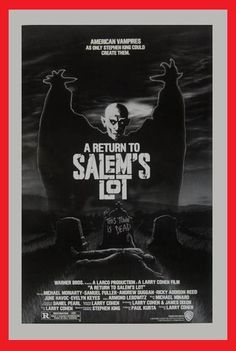
MATT WEDGE: I’m not sure which executive at Warner Bros. came up with the idea to do a direct-to-video sequel to the miniseries adaptation of SALEM’S LOT, but whomever it was, that person is a genius for handing the project to Larry Cohen.
While it carries over none of the characters from Tobe Hooper’s production of the miniseries or Stephen King’s novel, A RETURN TO SALEM’S LOT still somehow manages to carry a “based on characters created by” credit for King. Thankfully, Cohen does not try to recreate the dark tone of impending tragedy that King and Hooper gave their material. Instead, he takes the idea of a New England town overrun by vampires and turns it into a meditation about evil being defined by context. In this case, an anthropologist (frequent Cohen leading man, Michael Moriarty) spends much of the first half of the film living among the vampires and researching their history while struggling with his conscience about whether or not he should be trying to stop them. After all, they present themselves to him as simply a species trying to survive. How is their feeding on humans any different than humans feeding on other animals? How are their customs any different than those of the other indigenous peoples that the anthropologist has studied? It is not until an elderly Jewish man (legendary indie filmmaker Sam Fuller) arrives in town, searching for a fugitive Nazi war criminal, that the film acknowledges the idea of true evil.
In all honesty, linking vampires to the evil “final solution” of Hitler and the Nazis is a bit more than A RETURN TO SALEM’S LOT can handle, with its small budget and adherence to exploitation tropes. But it does allow Cohen to ask some tough questions and explore a unique slant on the tired vampire genre before going full camp in the final act. It may not be art and it has next to nothing to do with King and Hooper’s works, but it is an entertaining and unexpectedly thought-provoking pseudo-sequel that deserves a cult audience of its own. Plus, you get a cigar-chomping Sam Fuller staking vampires left and right. How can you turn down a viewing opportunity like that?
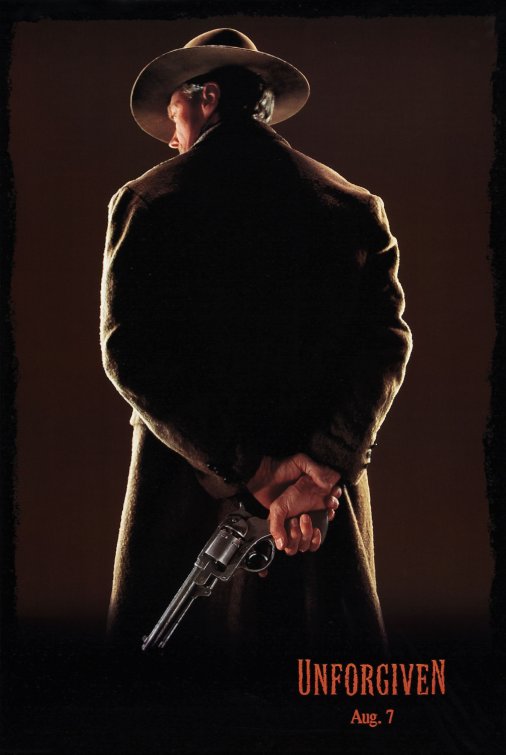

DOUG TILLEY: UNFORGIVEN isn’t a sequel to Clint Eastwood’s “Man With No Name” trilogy of films with Sergio Leone, and features no direct references to Eastwood’s notable American westerns like HIGH PLAINS DRIFTER or PALE RIDER. In fact, it wasn’t even written explicitly for Eastwood, with the script kicking around Hollywood since the mid ’70s. But much of the resonance and beauty of the film — directed by Eastwood himself in 1992 — comes from his relationship with the genre. When you see Eastwood, as the retired outlaw William Munny, get pulled back back into an ill concieved final score, you can see echoes of all of Eastwood’s most famous characters; and not just western characters. The film is dedicated to “Sergio and Don”, and it constantly feels like a summation both of Eastwood’s acting career, and in some ways the western genre as a whole. Unlike classic westerns, with their easy black hat/white hat morality, the Italian spaghetti westerns where Eastwood gained international fame were more interested in grey-shaded antiheroes. UNFORGIVEN takes that moral fuzziness a bit further, showing an older western hero tangling with his faltering skills and haunting nightmares about his past misdeeds take violent revenge against “innocent” townspeople and lawmen. It’s the next — and perhaps final — step of the western, and the bookend to Eastwood’s western career. A perfect film in my eyes, but one that wouldn’t be nearly the same achievement without the decades of iconic westen roles that came before it.
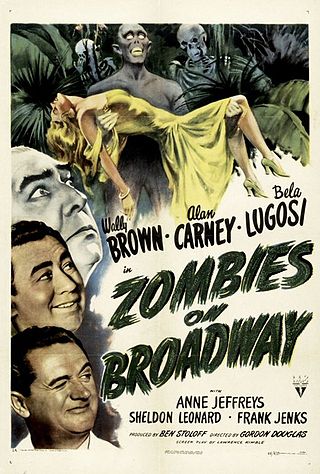
MAC BELL: ZOMBIES ON BROADWAY (1945). I have always maintained this goofy little RKO-produced horror comedy is an unofficial follow-up to the same studio’s Val Lewton horror classic: I WALKED WITH A ZOMBIE (1943). The hell you say? Yes, I say. The similarities are too obvious for it not to be so. Both are set on an island in the Caribbean named “San Sebastian” and built around a voodoo theme. More importantly, both feature a great zombie played by Darby Jones. And while his character has different names in each film, he plays the characters in a similar style, each supporting a bug-eyed, blank stare that can still freak one out. A Calypso singer played by Sir Lancelot also makes appearances in both films.
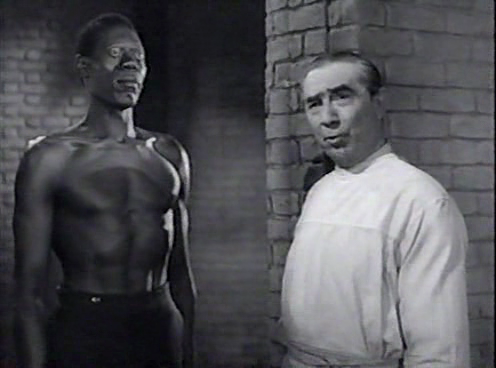
The fact ZOMBIES ON BROADWAY is a comedy starring a wannabe, second-rate Abbott and Costello type team (Wally Brown and Alan Carney) and features Bela Lugosi in one of his typical, hammy mad scientist roles keeps the film under film historian’s radars even with its ties to the Lewton classic. I find this a shame, as the film is a fun ride for fans of its famous predecessor. I wouldn’t say it’s particularly funny (Abbott and Costello had nothing to worry about), but its nostalgic value offers up a quick, good time.

JEREMY LOWE: The EVIL DEAD trilogy is something all onto itself. I really don’t think there is anything like it in any horror franchise. EVIL DEAD II: DEAD BY DAWN is pretty much a remake of the first EVIL DEAD movie, just with added humor and campiness. The strangest thing is EVIL DEAD 3, well… isn’t. It’s ARMY OF DARKNESS.
ARMY OF DARKNESS never was officially called EVIL DEAD 3. In fact, if I remember reading in the March 1993 issue of Fangoria magazine, this was done on purpose. I don’t remember all the details, but I can only assume that Universal Pictures tried to make ARMY OF DARKNESS a stand alone movie to bring in a wider audience. Sure it’s rated R, but compared current standards, it’s a pretty soft R. If ARMY OF DARKNESS was released today, it would easily have a PG-13 rating. It’s much more fantasy based than the first two films, and a much more comedic tone than either of it’s predecessors. It was like THE THREE STOOGES meets CONAN THE DESTROYER. I think EVIL DEAD II: DEAD BY DAWN is very campy, but nothing like ARMY OF DARKNESS.
If only Universal pictures could have looked into future and realized that the nerds would inherit the earth. That Ash would become anti-hero of sorts, and that there would be so much merchandising around the EVIL DEAD franchise, and even a television show (ASH VS. EVIL DEAD) on basic cable. Would they have still disowned the EVIL DEAD moniker when distributing ARMY OF DARKNESS? “Hail to the king, baby!”
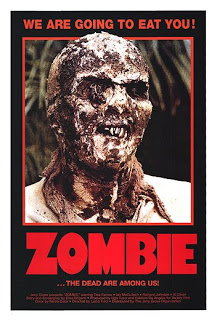
RYAN CAREY: I’m going to go with Fulci’s ZOMBI 2 as my “official” answer. Billed in Europe as a sequel to Romero’s DAWN OF THE DEAD (which went by the title of ZOMBI) there, we know it better as ZOMBI or even just ZOMBIE here in the US, but whatever you want to call it, who can argue with the fact that it’s an absolute masterpiece? Zombie vs. shark? Shit, any number of SyFy network movies are still trying to ape that today, and the “empty boat sailing into New York Harbor” trope has been swiped by God only knows how many other films, as well. This is a trailblazing masterwork of a film, and many Fulci fans consider it his best. And why not — who doesn’t love this movie?
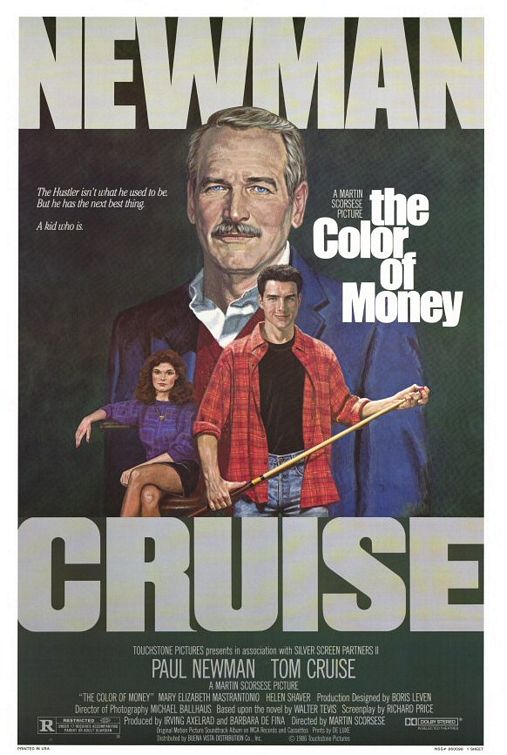
JON ZILLA: Paul Newman is sort of the patron saint of the unofficial-sequel genre. One of the best examples I can name is THE COLOR OF MONEY, which was released 25 years after THE HUSTLER and which finds Newman reprising his role as “Fast Eddie” Felson, mentoring a younger and way more annoying pool shark (played by Tom Cruise). Since both films were based on novels by the same author, Walter Tevis, and since Newman is very clearly playing the same character, it can be argued that this was an “official” sequel, but Fast Eddie leaped studios in between movies, and more creatively noteworthy, it’s got a finer pedigree than most sequels, directed by Martin Scorsese from a script by novelist Richard Price. And these days it feels sort of like one of the more overlooked movies by all involved, particularly Scorsese and Cruise, who deserves credit for following up his starmaking performance in TOP GUN with such an abrasive role. (Speaking of Tom Cruise: Is COLLATERAL an unofficial sequel to THE TRANSPORTER? Think about it.)
Keeping to the Paul Newman theme, we’ll just skip right over the SLAP SHOT sequels if you don’t mind (please don’t mind), so that we can talk about the legacy of BUTCH CASSIDY & THE SUNDANCE KID, which not only inspired a prequel, BUTCH & SUNDANCE: THE EARLY DAYS (starring Tom Berenger as Butch) but also an unofficial “spaghetti” Western reimagining – really just a renaming: SUNDANCE CASSIDY & BUTCH THE KID – and most recently, an intriguing film called BLACKTHORN, which imagines Butch surviving that infamous final moment of BUTCH CASSIDY & THE SUNDANCE KID and continuing on into old age, without Etta or Sundance. Butch Cassidy is played in this movie by Sam Shepard, which is pretty reasonable if you’re going to recast a role Paul Newman made famous. Shepard is fantastic and the movie looks incredible, though maybe fittingly, it’s mournful in tone and doesn’t have the snap of the 1969 classic.
Overall, Westerns are a motherlode of unofficial sequels, since many fictionalized historical figures recur throughout various films, admittedly without any sort of continuity. To take just one example, William Bonney, a.k.a. Billy The Kid, has shown up across movies in various forms: Roy Rogers, Audie Murphy, Kris Kristofferson, Dennis Hopper, Paul Newman (him again!), Robert Vaughn, Andrew Prine, Joel Grey, Clu Gulager, Michael J. Pollard, Robert Blake, Val Kilmer, Emilio Estevez, Donnie friggin’ Wahlberg, and whoever that guy was in BILL & TED’S EXCELLENT ADVENTURE. Obviously all those aren’t the continuing adventures of the same guy, who happens to be a shape-shifter in addition to an Old West outlaw, but it’s sort of hilarious to imagine it that way.
Moving on from Westerns, and I know this is becoming an epic, but I’d be remiss if I didn’t bring up two of my very favorite examples, first from the spy genre and then moving over to crime.
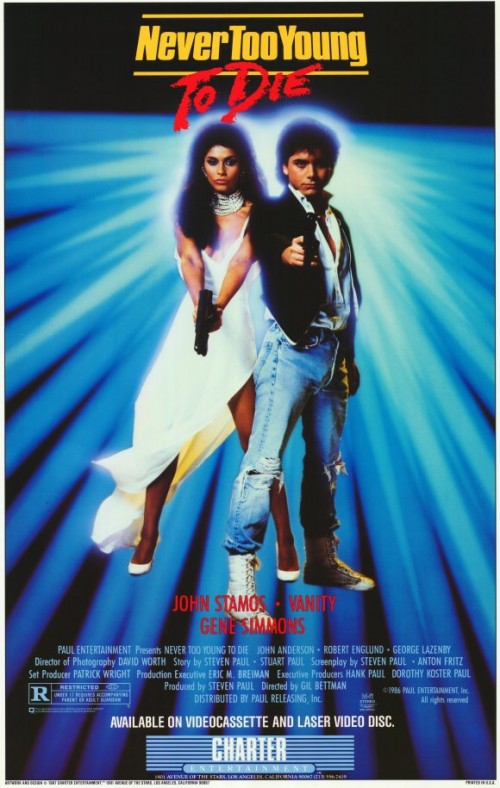
NEVER TOO YOUNG TO DIE features a young John Stamos as a gymnast named Lance Stargrove who inherits the mantle of secret agent (along with a love interest played by Vanity) when his father is killed by the film’s villain, who I won’t get into because this response is running way long as it is. The reason I call this an unofficial sequel is that the dashing spy father is played by George Lazenby, best known for playing James Bond once, in ON HER MAJESTY’S SECRET SERVICE. So yes, Lance Stargrove isn’t technically James Bond Junior (and NEVER TOO YOUNG TO DIE sure as hell isn’t any kind of Bond film), but that was clearly the idea with that particular casting inspiration.
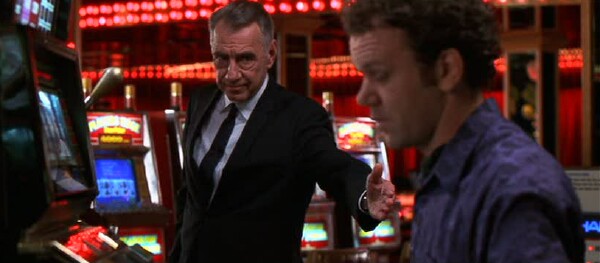
Finally, one extremely unofficial sequel I can’t resist is Paul Thomas Anderson’s SYDNEY, or HARD EIGHT as it was released, which is the story of a mysterious and vaguely shady older man who mentors a younger gambler in Vegas, in casinos and in life. The title character Sydney is played by Philip Baker Hall, who played a similarly-named character, Sidney, in a very different movie, MIDNIGHT RUN. It’s a cult theory on the internet that the two are one and the same, since Sidney works as a consigliere for mobsters in MIDNIGHT RUN and Sydney indicates in HARD EIGHT that he had a similar gig once upon a time. I think the theory can be traced to this Esquire article from eight years ago, where it’s suggested Anderson got the idea for the character while watching MIDNIGHT RUN.
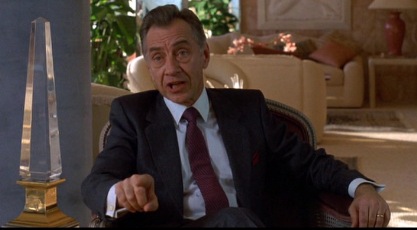
Whether it’s entirely true or not almost doesn’t matter, because what matters is that MIDNIGHT RUN is awesome and so is SYDNEY/ HARD EIGHT, and to me this way of “sequelizing” movies and characters is so goddamn much more interesting than opening up a random comic book or looking at whatever Kevin Hart did last year that made some money. The great possibility available in these so-called unofficial sequels is a field of storytelling creativity that, especially in today’s film climate of multiplexes and mega-budgets, is too rarely explored.
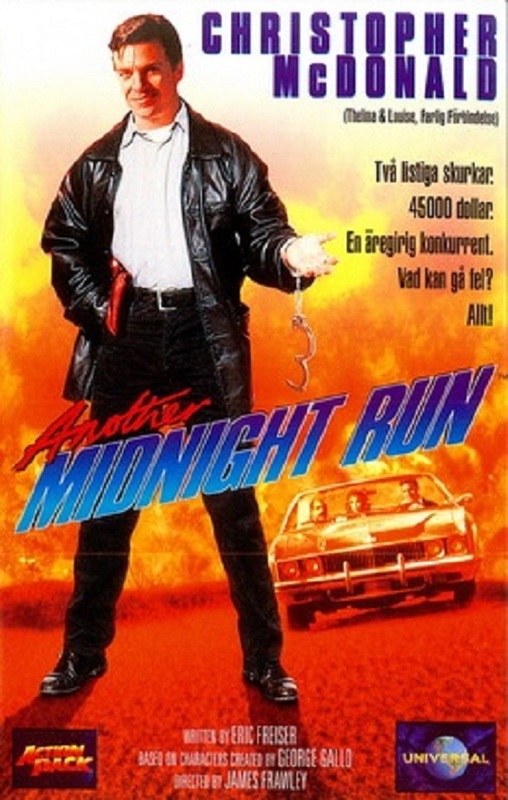
Failing that, it turns out MIDNIGHT RUN did have not one, not two, but three official sequels — all three TV movies, all of which apparently aired in 1994. ANOTHER MIDNIGHT RUN, MIDNIGHT RUNAROUND, and MIDNIGHT RUN FOR YOUR LIFE continued the misadventures of Jack Walsh, with Christopher McDonald stepping in for Robert De Niro. He’s great, but that’s not entirely an upgrade. Likewise Ed O’Ross (RED HEAT), who took over the role of Marvin Dorfler, is solid but no John Ashton. And Dan Hedaya grabbed Joe Pantoliano’s part — okay, that last one’s a wash. To me, all this stuff is super-interesting, but let me ask you people out there rhetorically, the presumably more well-adjusted majority: Which is the better sequel situation here — the three TV movies nobody but me and IMDb have ever heard of, or the one potentially made by Paul Thomas Anderson, off-the-books?
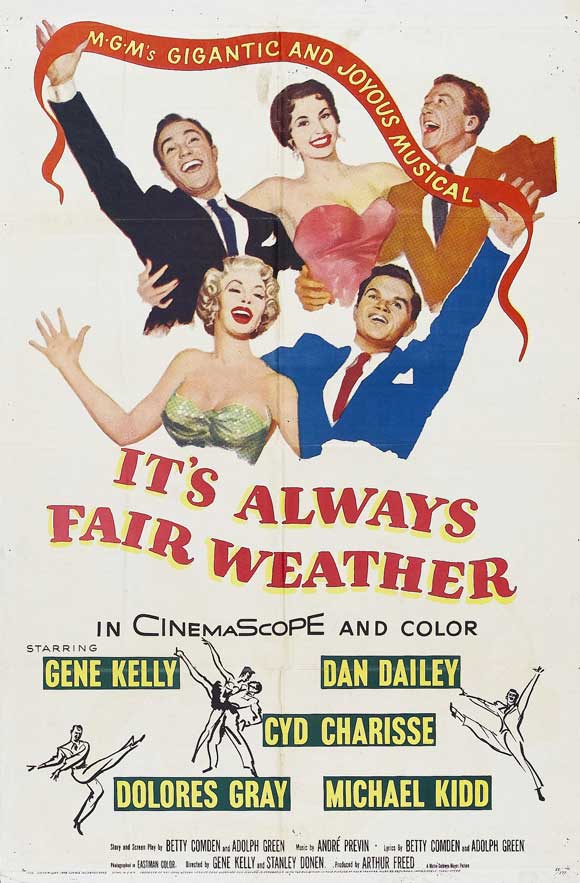
JOHN REENTS: IT’S ALWAYS FAIR WEATHER (1955) is one of the most cynical movie musicals ever released by a major studio. It’s the story of three soldiers (Gene Kelly, Dan Dailey, and Michael Kidd) who reunite exactly ten years after going their separate ways at the end of World War II. The gathering is less a sentimental stroll down memory lane than it is a rude awakening for all three of them. They barely know each other anymore, and don’t much like each other (or themselves) either.
FAIR WEATHER was conceived as a sequel to the 1949 smash ON THE TOWN and reunited much of that film’s creative team: Kelly and Stanley Donen directed and choreographed; Betty Comden & Adolph Green were back to write the screenplay and lyrics (to music by Andre Previn); and the film was again produced by Arthur Freed for MGM. Kelly was also back to star, but his ON THE TOWN chums Frank Sinatra and Jules Munshin were passed over in favor of Dailey and Kidd. ON THE TOWN was a joyous romp, the story of three sailors (Kelly, Sinatra, and Munshin) on 24-hour leave in New York City, seeing the sights, picking up girls, and getting into a shenanigan or two. IT’S ALWAYS FAIR WEATHER, on the other hand, is ON THE TOWN’s unrelenting hangover. And I love it.
Some highlights from “MGM’s Gigantic and Joyous Musical!” (per the ad copy): When Dailey takes Kelly and Kidd to an exclusive restaurant, the three men each voice their inner thoughts to the tune of “The Blue Danube,” which an orchestra is playing in the background. That songs title? “I Shouldn’t Have Come.” When Kelly learns the boxer he manages is going to take a fall at his next fight, he simply switches his bets to the other guy. Kelly and romantic interest Cyd Charisse’s romantic duet was called “Love Is Nothing but a Racket” before it was left on the cutting room floor. Dan Dailey has a nervous breakdown in ad doublespeak. Michael Kidd had his role significantly reduced in the editing room because Kelly was jealous over his success with SEVEN BRIDES FOR SEVEN BROTHERS (I know that that’s superfluous, but it’s the only thing interesting about Michael Kidd in this movie). It’s still an MGM musical, so naturally there’s a happy ending, but that only comes about because the three men reignite their camaraderie in a fistfight against the racketeers who set up Kelly’s boxer.
Still, it’s a very funny. Comden & Green were at the top of their game as screenwriters, so the movie never seems as dark as it is. And the performances are pitch perfect. Dolores Gray, as the talk show host, is magical singing in “Thanks a Lot But No Thanks.” Cyd Charisse dances up a storm in a boxing ring in “Baby, You Knock Me Out.” The opening montage of Kelly, Dailey, and Kidd’s final night together includes a dance where each of them has a garbage can lid on one foot. Gene Kelly tap dances on roller skates! Sure, that dance follows a song called “I Like Myself,” and liking himself is the hero’s big self-revelation, but roller skates! What’s not to love?

MIKE VANDERBILT: In the era of drive-ins and grindhouse theatres, plenty of movies got unofficial sequels simply because distributors would re-title them to capitalize on a hit. THE CUCKOO CLOCKS OF HELL became LAST HOUSE ON DEAD END STREET and then there are the countless D’JANGO and EMMANUELLE entries. The Jess Franco directed GRETA, THE MAD BUTCHER was released under several titles, including WANDA, THE WICKED WARDEN is perhaps best known as ILSA, THE WICKED WARDEN.
Filmed in German as GRETA: HAUS OHNE MANNER and released in 1977, the film was dubbed in English and Dyanne Thorne’s character’s name was changed to Ilsa to capitalize on the popularity of the previous films of the series. THE WICKED WARDEN plays like a sexploitation SHOCK CORRIDOR with Tania Busselier committing herself to Ilsa’s dangerous mental hospital to find out what happened to her sister while she was committed. Much like NEVER SAY NEVER AGAIN and OCTOPUSSY, both THE WICKED WARDEN and ILSA, TIGRESS OF SIBERIA were released the same year.
For the most part, THE WICKED WARDEN is not much of a departure, showcasing kink, sex, and beautiful women being brutally tortured; Jess Franco’s film doesn’t feature as many men on the receiving end of Ilsa’s evil as the other films in the series. While TIGRESS embraces some weird scenes of mental torture and a plot that swings for the exploitation fences, THE WICKED WARDEN focuses more on that pseudo-softcore style that Franco became known for throughout his career. THE WICKED WARDEN features just enough cruel torture devices and scantily clad women, but it is certainly this writer’s number four in the ILSA franchise.
There was a fourth sequel planned with Ilsa taking on a Brucesploitation actor, in what could have been exploitation cinema hitting critical mass. ILSA MEETS BRUCE LEE IN THE DEVIL’S TRIANGLE was announced for 1976, but never made it past the pre-production stage. There is a review online in which the writer claims that he has seen the film, but Dyanne Throne herself has debunked that rumor, and even if it was shot, an Ilsa movie with Dyanne Thorne just wouldn’t be civilized.
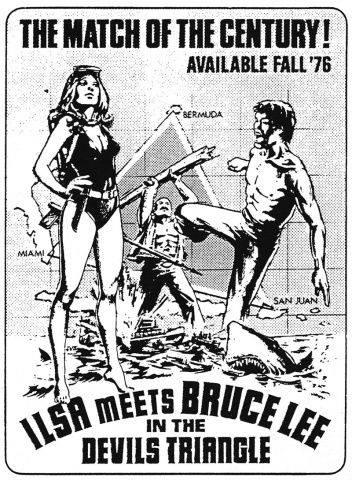
- [THE BIG QUESTION] WHAT’S YOUR FAVORITE FEMALE ENSEMBLE IN MOVIES? - July 22, 2016
- [IN THEATERS NOW] THE BOY (2016) - January 24, 2016
- Cult Movie Mania Releases Lucio Fulci Limited Edition VHS Sets - January 5, 2016
Tags: Answers, Questions, Sequels, The Big Question, Unofficial Sequels

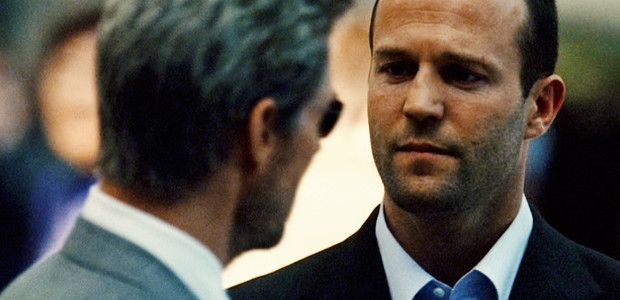
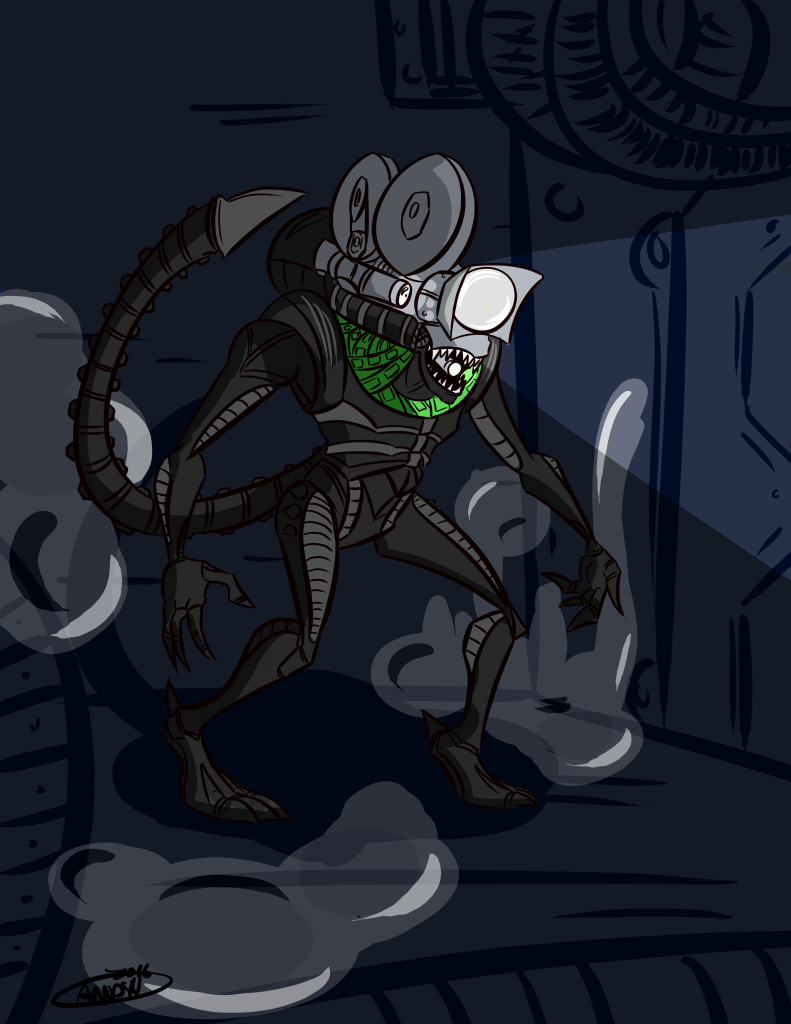




Evil Dead II isn’t a remake at all. The first movie is recapped through newly shot footage in the beginning, but then it goes off into wholly new territory, save for the fact that they seem to discover the destroyed bridge for the first time in both films.